#Charioteer of Delphi
Explore tagged Tumblr posts
Text

Charioteer of Delphi
* 478/474 BCE
* Bronze
* Height: 1,8 m
* Delphi Archaeological Museum
Delphi, October 2008
#Charioteer of Delphi#5th century BCE#Delphi#Pythian Games#Sanctuary of Apollo#Polyzalus#Pythagoras of Rhegion#ancient#art#Greek#bronze#statue#sports#Delphi Museum#my photo
75 notes
·
View notes
Text

Ηνίοχος, Μουσείο Δελφών, Φωκίδα
Αφιέρωμα στο Μαντείο των Δελφών από τον τύραννο της Γέλας Πολύζαλο και σμιλεμένο σε χαλκό, είναι ένα από τα πιο αριστουργηματικά αγάλματα των κλασικών χρόνων που έχουν διασωθεί, κάτι που οφείλεται στον σεισμό του 373 π.Χ., που κατέστρεψε τον αρχαϊκό ναό όπου στεγαζόταν, καταπλακώνοντάς το και έτσι «κρύβοντάς» το από τους αρχαιοκάπηλους μέχρι το 1896, οπότε αποκαλύφθηκε κατά τις ανασκαφές της Γαλλικής Αρχαιολογικής Σχολής.
Ο ύψους 1.82 μ. νεαρός αναβάτης απεικονίζεται όρθιος στον δίφρο, αμέσως μετά τη νίκη του και ενώ κάνει τον γύρο του θριάμβου. Φορά μακρύ χιτώνα που ζώνεται ψηλά και συγκρατείται με δύο ταινίες για να μην ανεμίζει στη διάρκεια του αγώνα. Την κόμη του περιζώνει σύμβολο νίκης, μια ταινία διακοσμημένη με ασημί μαίανδρο. Τα μάτια του είναι ένθετα, από ημιπολύτιμο λίθο και γυαλί. Σου εντυπώνονται και νιώθεις ότι σε παρατηρούν απ’ όποια μεριά κι αν σταθείς, αποπνέουν δε μια αυτοπεποίθηση και μια εσωτερικότητα που συμβολίζει τη μετάβαση από την αρχαϊκή στην κλασική τέχνη, καθώς διαβάζω.
Ο Ηνίοχος φιλοτεχνήθηκε αμέσως μετά τους Περσικούς Πολέμους, μάλλον από τον Πυθαγόρα τον Σάμιο (όχι τον φιλόσοφο). Αποτελούσε μέρος ενός μεγαλύτερου συμπλέγματος, το οποίο περιλάμβανε τέθριππο και τουλάχιστον μια δεύτερη μορφή, πιθανότατα έναν ιπποκόμο. Από αυτό σώζονται δύο πίσω πόδια αλόγων, μια ουρά, κομμάτια από τον ζυγό του άρματος και ένα εφηβικό ή παιδικό χέρι με απομεινάρια ηνίων.
#Ηνίοχος#άγαλμα#χάλκινο#κλασσική περίοδος#Πυθαγόρας ο Σάμιος#αρχαιότητα#τέχνη#Μουσείο Δελφών#αφιέρωμα#Γέλας Πολύζαλος#Charioteer of Delphi#Heniokhos#statue#ancient Greek#Delphi Archaeological Museum#Early Classical#Greece#Ελλάδα#Hellas#art#Greek art
4 notes
·
View notes
Text
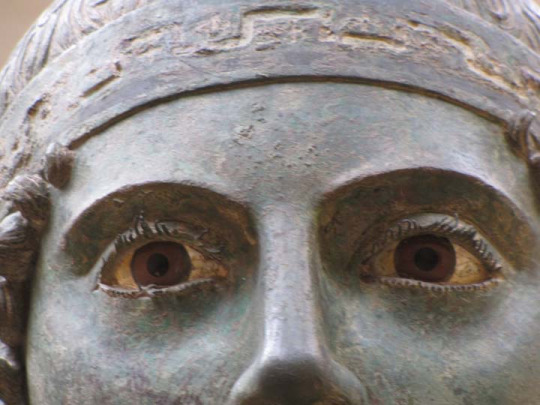
Charioteer of Delphi
I adore this statue because of the introverted expression suggesting profound inner life of the person.
0 notes
Text

Charioteer of Delphi. From “The Civilization of Greece” by François Chamoux, 1960.
2K notes
·
View notes
Text

Detail: head of the Charioteer of Delphi. From "The Civilization of Greece" by François Chamoux, 1960.
800 notes
·
View notes
Note
hey!! I loved your Epic series, and if it doesn't bother you, can you do one of places where Apollo would have sex with fem!reader? <3
A/n: Excellent

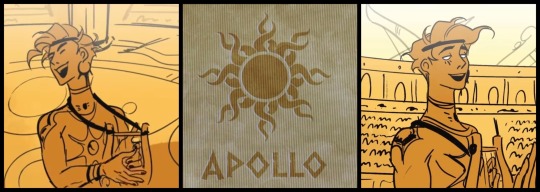

Apollo’s Favorite Places He and You Have Had Sex
By the god of poetry, prophecy, music, and absolutely unholy sex

1. In the Temple Dedicated to Him
Of course this is one of his favorites. What kind of god wouldn’t want to be worshiped in every possible sense of the word?
He had you spread across the marble altar, sunlight slicing through the columns like golden blades, casting holy light on your naked skin. The air was thick with incense — frankincense, myrrh, and your scent, which he swears is now his favorite perfume.
Apollo took his time, slow and deliberate, the kind of slow that’s maddening. He whispered praises into your ear in Ancient Greek, tongue flicking along your neck as he slid into you. Every roll of his hips made the mosaics overhead seem to shimmer. “You were made for this,” he muttered, hands holding your thighs open like he was offering you to the gods — except he was the god, and you were already his offering.
By the time he finished, you were trembling, back arched, the altar damp with sweat. He looked down at you like you were the prophecy he never saw coming — beautiful, divine, and absolutely wrecked.
2. On His Sun Chariot (While It Was in the Sky)
“Do you trust me?” he asked with that infuriatingly perfect grin — right before lifting you into the flaming chariot mid-sky.
The chariot moved fast, powered by his divine horses, soaring through the clouds. The wind whipped your hair back, and the sunlight painted his skin in godly gold, brighter than anything mortal eyes could bear. But he only had eyes for you.
He had you bent over the front of the chariot, bracing yourself against the golden frame as he pounded into you from behind, every thrust rattling the heavens. The horses neighed in approval (or protest — honestly who cared?), and the mortals below probably thought the streaks in the sky were shooting stars. They had no idea it was just Apollo fucking his favorite mortal across the stratosphere.
You came screaming his name — and somewhere, a poet was struck with inspiration.
3. In the Oracle’s Chamber at Delphi
The sacred space where his voice speaks through the Pythia and now, through you, when he’s deep inside and you can barely form coherent words.
The first time it happened, he caught you staring a little too long at the bronze tripod where the Oracle sat. He raised a brow and said, “Wanna sit there?” And you, of course, didn’t realize what he meant until he was lowering you onto it, letting you straddle the seat while he knelt before you.
His tongue was devastating. Divine. Almost cruel with how expertly he worked you up, dragging it over your slick folds, licking and sucking like it was ambrosia. He held your thighs open, whispering things no mortal should ever hear — promises of how he’d make you feel like a goddess, if only for a moment.
And then he stood, slid into you with a slow groan, and suddenly you understood why the Oracle spoke in tongues. Because with Apollo inside you, gasping and calling out is the only language that makes sense.
4. In the Middle of a Field of Poppies
Sun-warmed, lazy, dream-dazed sex. One of those days where he’d wrapped himself around you under the golden sun, fingers lazily stroking your skin, feeding you grapes and kisses like you were Persephone and he was trying to lure you into staying forever.
The poppies rustled around you, soft and fragrant, as he slid between your legs with the kind of tenderness that made your chest ache. He didn’t thrust so much as roll into you, every motion a sin made sacred by the way he whispered your name.
This was slow, syrupy sex. Hands in hair. Lips on collarbones. Words like “mine” and “always” murmured like prayers. He made love to you, and then he did it again, even slower, even deeper, until you were boneless and blissed out and wearing nothing but petals and his fingerprints.
5. On the Stage at an Empty Amphitheater
Because Apollo isn’t just the god of prophecy and plague — he’s the god of music, and your moans are his favorite melody.
He sat on the edge of the stage, legs spread, cock hard and leaking, beckoning you forward like you were his next performance. You sank to your knees, mouth parting around him, and he groaned like the first note of a song.
But that wasn’t enough. It never is with him. He pulled you up, bent you over the edge of the platform, and slid into you with a low hiss. The acoustics made everything louder — the slap of skin, the wet sound of your cunt, your broken cries as he fucked you harder and harder, until your voice echoed across the stone walls like some ancient hymn.
He swore later that if anyone ever heard that echo, they’d be compelled to write the next great tragedy. One that begins and ends with a god losing his mind over a mortal like you.
6. In His Sacred Grove — Against a Laurel Tree
Oh, this one was personal.
You were teasing him, wearing one of his laurel crowns and nothing else, lounging among his trees like you owned the place. “You know that’s sacred,” he warned, but you just smiled.
So he made you kneel before the tree, cheek pressed to the bark, while he took you from behind, fingers gripping your hips so tight you bore little bruises shaped like his hands.
“You think you can mock me, little nymph?” he growled against your neck. “I’m a god. Your god.”
You bit back a moan, but he smirked. “Say it. Who do you belong to?”
“Apollo,” you gasped. “I belong to Apollo.”
He didn’t stop until your legs gave out, and even then he lifted you, pinned you to the tree, and fucked you into it like he was staking his claim on nature itself.
7. In His Library — With You Bent Over His Scrolls
Knowledge? Sacred. Learning? Beautiful. But nothing makes Apollo harder than seeing you stretched across his parchment, smudging ink with your sweat and slick.
He had been reading. You had been distracting. And suddenly, you were bent over the desk, skirt bunched around your waist, hands grasping for the edge as he filled you from behind. Scrolls fell to the floor. Candles flickered. The only thing louder than your cries was the sound of his hips slamming into you.
He groaned every time you clenched around him. “You’re ruining centuries of wisdom,” he growled, “and I don’t even care.”
You came with his name on your lips and a map of ancient texts pressed into your back. He came with a curse and a promise — that he’d bind you to him, with words and moans and the kind of pleasure only a god can give.
Honorable Mentions
• In the bath, with golden oils and lazy kisses
• During a thunderstorm, while lightning crackled around you
• In mortal disguise, in a crowded temple, with his fingers inside you while you tried to stay quiet
• Against a mirror, watching you fall apart and loving every second of it
And the best part?
Every time he takes you — no matter the place — he swears he falls a little more. You’re his muse, his madness, his favorite song. And he’ll keep writing you into every verse, every prophecy, every moan that leaves his lips.
Because for Apollo, the god of light, there is nothing more divine than the way you say his name when you come.
#drabbles#drabble#imagines#apollo#apollo x reader#apollo x you#Apollo x y/n#apollo epic the musical#Apollo etm#epic#epic the musical#epic the musical Apollo#epic the musical x reader#epic x reader#epic x you#etm#etm x reader#smut
985 notes
·
View notes
Text
Ἀπόλλων Φοῖβος, Θεὸς τοῦ Ἡλίου
Apollon, Bright One, God of the Sun
He is associated with Sunlight and the Sun, Music and Poetry, Prophecy and Oracles, Healing and Medicine, Plague and Disease, Archery, Knowledge and Wisdom, Purification and Cleansing, Order and Civilization, Protection of Herds and Flocks, Seafarers, Masculine Beauty, Music Theory and Harmony, Time and Seasons.
His symbols are the Lyre, Bows and Arrows, the Laurel Wreath, Ravens, Serpents, the Sun/Chariot of the Sun, Palm Trees, Bay/Laurel Trees, Wolves, Cypress Trees, Tripod, Lyric Poetry Scrolls, Golden Hair and Swans.
Major Sanctuaries and Temples
Delphi was the most famous sanctuary of Apollon, home to the Oracle of Delphi and the Pythian Games.
Delos was Apollon’s birthplace and celebrated Him with grand festivals like the Delia.
Didyma was known for its oracle and the Temple of Apollon, featuring massive columns.
Claros was another major oracle site, with its temple and priesthood.
Thermopylae was sacred to Apollon during the Amphictyonic League meetings.
Bassae was home to the Temple of Apollon Epikourios, renowned for its architectural innovation.
Aegina featured a Doric temple dedicated to Apollon.
Patara was an ancient Lycian city with ties to Apollon and prophecy.
Miletus’ citizens worshipped Apollon as their protector.
Rhodes revered Apollon as part of the island’s patron deities.
Athens worshipped Apollon in several roles, including Apollo Patroos (Protector of Families).
Sparta honoured Apollon as a god of order and harmony.
In Rome, Imperātor Gāius Iūlius Caesar Augustus constructed the Temple of Apollo Palatinus, aligning Apollo with imperial propaganda.
Mt. Parnassus, near Delphi, was regarded as sacred to Apollon and the Muses.
The island of Crete celebrated Apollon in various cities, such as Gortyna and Dreros.
General Epithets
Apollon (Bright, Radiant), associated with His solar and light-bearing qualities.
Delphinios (Of Delphi), linked to His sanctuary and oracle at Delphi.
Mousagetēs (Leader of Muses), celebrating His patronage of the arts and inspiration.
Loxias (Oblique, Mysterious), reflecting His cryptic oracular messages.
Pythios (Of Pythia), commemorating His victory over Python at Delphi.
Alexikakos (Averter of Evil), worshipped as a protector from harm and calamity.
Medicus (Healer), honouring His medical and healing powers, especially in Roman worship.
Catharsius (Purifier), invoked in cleansing rituals.
Smintheus (Mouse God), protector from plague and agricultural pests.
Lykeios (Wolf God), linked to His protective and wild nature.
Nomios (Pastoral), celebrating His guardianship over herds and flocks.
Karneios (Of Flocks), worshipped in rural Spartan traditions as a regional variation of Nomios.
Helios (Sun God), representing His solar connections in later traditions.
Agyieus (Of the Streets), protector of pathways and travelers.
Delios (Of Delos), celebrating His birthplace.
Didymaeus (Of Didyma), connected to His oracle in Ionia.
Festivals
The Pythian Games were held every four years at Delphi, including musical and athletic competitions in Apollon's honour.
Thargelia was an Athenian festival honoring Apollon and Artemis, featuring purification rituals and offerings of first fruits.
Delia, on Delos, was a festival that included musical contests, dances, and sacrifices sacred to Apollon.
Worship Practices
Sacrifices were often of animals such as bulls and goats, symbolic of his divine strength.
Prophecy played a central role in his worship, with priestesses and the Oracle at Delphi channeling his divine wisdom.
Apollon was invoked in rituals of cleansing and renewal, often symbolized by water.
Roman Veneration
Apollo Medicus was venerated as a god of healing during plagues.
Imperātor Gāius Iūlius Caesar Augustus claimed Apollo as his divine patron, constructing the Temple of Apollo on the Palatine Hill of Rome.
Altars and Sacred Spaces
Altars dedicated to Apollon are typically adorned with symbols like the lyre, laurel leaves, sun motifs and representations of His sacred animals (e.g., swans, wolves, or ravens), often altars placed in sunlit areas to honor His solar aspects.
Altars are frequently decorated with golden or yellow fabrics, sun-shaped decorations, and natural materials like wood or stone are common.
Offerings
Traditional Offerings are laurel leaves, honey, olives, figs, and wine.
Music, poetry, and other creative expressions are also considered as offerings due to Apollon's role as a patron of the arts.
Frankincense and bay laurel oil are burned, while crystals like sunstone and pyrite are used to symbolize His solar and abundant aspects.
Rituals and Practices
Devotees skilled in the arts often recite prayers or compose hymns in His honor, often inspired by ancient texts, while others prefer to stay with the ancient texts themselves. Both choices are equally valid.
Practices like meditating on Apollon's attributes or using divination tools to seek His guidance are common.
The creation of or recitation of music and poetry are also acts of worship. From humming a tune to singing along to your favourite songs, it counts as an offering and is just as valid.
Apollon's teachings on balance and enlightenment inspire personal growth and artistic pursuits, often being blended with the pursuit of philosophical and sometimes even spiritual enlightenment.
Rituals for spiritual or physical healing often invoke Apollon's aid, emphasizing His role as a healer.
Devotees seek His guidance in intellectual and intuitive endeavors, reflecting His association with wisdom and oracles.
Seasonal Celebrations:
Some practitioners observe festivals inspired by ancient traditions, such as the Thargelia or Delia, adapting them to modern contexts. I have yet to find a universally agreed upon date, but April 6th or the Spring Equinox are common due to Apollon's purifying and cleansing epithets, as well as His light and solar epithets.
Personal Notes
Apollon is a deity who only very recently called to me, which is amusing to me since I would have been under His protection. It speaks to me of His integrity that rather than reach out to me then, He has waited nearly seventeen years to do so. I think that perhaps is to do with two things which actually blend hand in hand; the first being that I have a strong suspicion that when He reached out to me, it was not as His Greek self nor even His Roman self; rather, it was as Paean (𐀞𐀊𐀺𐀚, Pajawone) that He reached out.
While I try to keep the history out of the religion in these posts, I feel it is best to explain fully in the case of Hellenic deities whose Mycenaean forms call to me most (of which there is a surprising number). Apollon, as Paean, is chiefly a god of medicine and healing. However, in Troy he was a god of hunting and protection, defending the early Trojans from the beasts of the forest. It is this Trojan Apollon, whom they called Paeiōn (𐀞𐀊𐀩𐀍, Pajerone) that called to me and is still known to this day as Apollon Lykeios. For those wondering why the names changed so much, the evolution from Pajerone to Apollon is due to the language changing and evolving during the Greek Dark Ages; the earliest known midway point is Apeljōn, so the linguistic evolution would be Pajerone -> Apeljōn -> Apollon.
With the mini history lesson out of the way, apologies for boring any of you, now to explain the significance of Pajerone/Apollon Lykeios as main epithet I worship. The Wolf God, Apollon Lykeios, is very different from the other representations of Apollon and is quite, shall we say, wild by comparison. He is still a healer, still knowledgeable in philosophy and music, but He is much more akin to His Sister Artemis and Her preference of the forest and the hunt. He is the Wolf, the hunter who struck down the Python and gained prophetic insight, the friend of Hyperborea whose bow can bring any prey low. To me, as Lykeios, he is still a God of Light, but his light is not simply the gold of the sun. It is the green of the field, the red and pink of blood on his skin. It is the purple of his robe and the blue of his eyes, dancing in the sky as the Aurora Borealis. He is the light that dances with the moon and stars, the Hunter who no prey escapes, the Wanderer who heals all with his herbs.
While far from the first Hellenic deity to call to me, He is perhaps the most important one for bridging the gap between the two main pantheons I worship, an ancient link between the northern hunters and the cradle of the West. It is through this link, through His wandering path from Hellas and Hyperborea all the way to Middungeard and beyond, that I can best reconcile worshipping two pantheons without Syncretism. He is a bridge between worlds, a fierce protector and a noble friend to all.
Orphic Hymn to Apollon
Blest Pæan, come, propitious to my pray'r,
illustrious pow'r, whom Memphian tribes revere,
Slayer of Tityus, and the God of health,
Lycorian Phœbus, fruitful source of wealth.
Spermatic, golden-lyr'd, the field from thee
receives it's constant, rich fertility.
Titanic, Grunian, Smynthian, thee I sing,
Python-destroying, hallow'd,
Delphian king:
Rural, light-bearer, and the Muse's head,
noble and lovely, arm'd with arrows dread:
Far-darting, Bacchian, two-fold, and divine,
pow'r far diffused, and course oblique is thine.
O, Delian king, whose light-producing eye views all within,
and all beneath the sky:
Whose locks are gold, whose oracles are sure,
who, omens good reveal'st, and precepts pure:
Hear me entreating for the human kind, hear,
and be present with benignant mind;
For thou survey'st this boundless æther all,
and ev'ry part of this terrestrial ball
Abundant, blessed; and thy piercing sight,
extends beneath the gloomy, silent night;
Beyond the darkness, starry-ey'd, profound,
the stable roots, deep fix'd by thee are found.
The world's wide bounds, all-flourishing are thine,
thyself all the source and end divine:
'Tis thine all Nature's music to inspire, with various-sounding, harmonising lyre;
Now the last string thou tun'ft to sweet accord,
divinely warbling now the highest chord;
Th' immortal golden lyre, now touch'd by thee,
responsive yields a Dorian melody.
All Nature's tribes to thee their diff'rence owe,
and changing seasons from thy music flow
Hence, mix'd by thee in equal parts, advance
Summer and Winter in alternate dance;
This claims the highest, that the lowest string,
the Dorian measure tunes the lovely spring.
Hence by mankind, Pan-royal, two-horn'd nam'd,
emitting whistling winds thro' Syrinx fam'd;
Since to thy care, the figur'd seal's consign'd,
which stamps the world with forms of ev'ry kind.
Hear me, blest pow'r, and in these rites rejoice,
and save thy mystics with a suppliant voice.










#hellenic deities#hellenic pagan#hellenism#hellenic polytheism#hellenic worship#hellenic gods#helpol#hellenic polythiest#greek gods#greek mythology#apollo
194 notes
·
View notes
Text
Random Greek Deity Facts
- Artemis has been associated with horses in the past.
- Ares has associations with owls.
- There are ancient gravestones with reliefs on them that historians still cannot tell if the art is of Dionysus or Jesus.
- It is common for historians to struggle identifying if a statue is of Artemis or Apollo because they often look so much alike.
- Hephaestus is a god of fire.
- Maia, the Mother of Hermes, was thought to assist in raising both Dionysus and Hephaestus.
- Hypnos is said to live in a massive cave, sleeping with thousands of his sons.
- Rather than blood, Greek gods are said to have something called Ichor running through their veins; no one is quite sure what "Ichor" actually is.
- Both Apollo and Artemis are deities of light; it is not just Apollo. Along with this, it is believed Leto may also be a goddess of light.
- It is commonly believed that the hyacinth flower is not actually the flower Hyacinthus was infamously transformed into; most sources seem to agree that it was likely either an iris or a larkspur.
- At one point in the Dionysiaca, Dionysus wages a war against India. The goddess Rhea is said to have gathered troops for him, and Zeus was said to have been the one to task Dionysus with going to war in order to allow him to join the gods on Mount Olympus.
- Demeter's chariot is pulled by two giant winged serpents; she has literal dragons pulling her around, and no one is talking about it.
- The Python was a child of Gaia, and before Apollo took up the Oracle in Delphi, there was actually an Oracle with Gaia in that location.
- The twins Castor and Pollux, who made up the Gemini constellation, were commonly worshipped throughout ancient Greece under the title of the "Dioscuri" or "Dioskouroi".
- Also regarding the Dioskouroi, the name "Castor" ("Kastor") may translate to "Beaver".
- The famous epithet "Paean" of Apollo was also listed on an ancient Mycenaean tablet that listed the names of separate deities. It is, therefore, possible that Paean was once a separate god who later became associated/merged with both Apollo and his son Ascelpius.
- Besides being an epithet, a Paean was also a type of devotional chant/song that was sung in honor of Apollo. Some ancient sources claim that the event of singing a Paean could actually be quite loud, involving clouds of stomping/banging and movement.
- The masculine version of Hekate's name, "Hekatos", was an epithet for the god Apollo; both names can be translated to "worker from afar".
- The first record of the more "traditional" view of a werewolf comes from the Greek myth about King Lycaon, when Zeus transformed into a wolf for ten years as punishment for tricking the gods into consuming human flesh (yes, you read that right).
- In the myths, Zeus and Hermes have a lovely Father-Son bonding trip of destroying an entire village (except for one home) for not showing either of the disguised gods hospitality as poor travellers.
- Both Apollo and Zeus were seen as gods who purified "blood-guilt" - a condition which was caused by the killing of another person and required immense purification.
- Cerberus is described as a fully sentient being who can communicate as other immensely powerful children of Gaia could, meaning he is akin to the gods in terms of intelligence rather than being like an overgrown dog.
- Hermes is said to be the inventor of offerings, specifically animal sacrifices.
- One origin of the Pegasus was Poseidon and Medusa doing the devil's tango.
- There is a tale that claims Hermes to be the one who granted Aesop his knowledge of fables.
- According to some ancient sources, Cerberus has as many as fifty heads, a mane of snakes, the claws of a lion, and a snake tail.
- Iris was not only the goddess of rainbows but was also the personal messenger of Hera and was prominently featured in The Iliad delivering many messages on behalf of the Olympian gods.
- Eros has been depicted as the child of Aphrodite and Ares, the child of Ouranos and Aphrodite, the child of solely Aphrodite, the child of Poros and Penia, the child of Ouranos and Gaia, the child of Zephyrus and Iris, and a primordial being who simply came into being. So, where did Eros actually come from? Your guess is as good as any.
----
That's all for now! Let me know if y'all enjoyed these and would like more. 🧡
----
|| Sources ||
- Theoi.com (of course)
- The Iliad by Homer
- Theogony by Hesiod
- The Dionysiaca by Nonnus
- Information from various museum trips in Athens and Delphi, Greece (sorry, I don't remember the exact sources 💀)
#helpol#hellenic polytheism#hellenic pagan#hellenic pantheon#greek mythology#please reblog this version with the sources
1K notes
·
View notes
Text
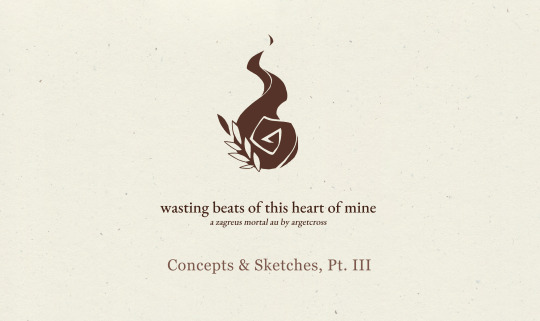
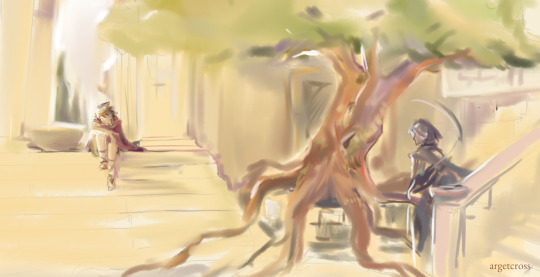
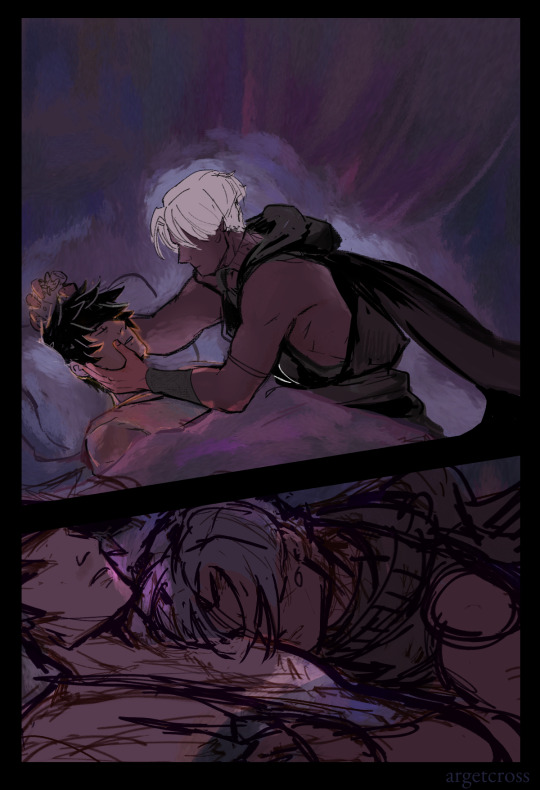
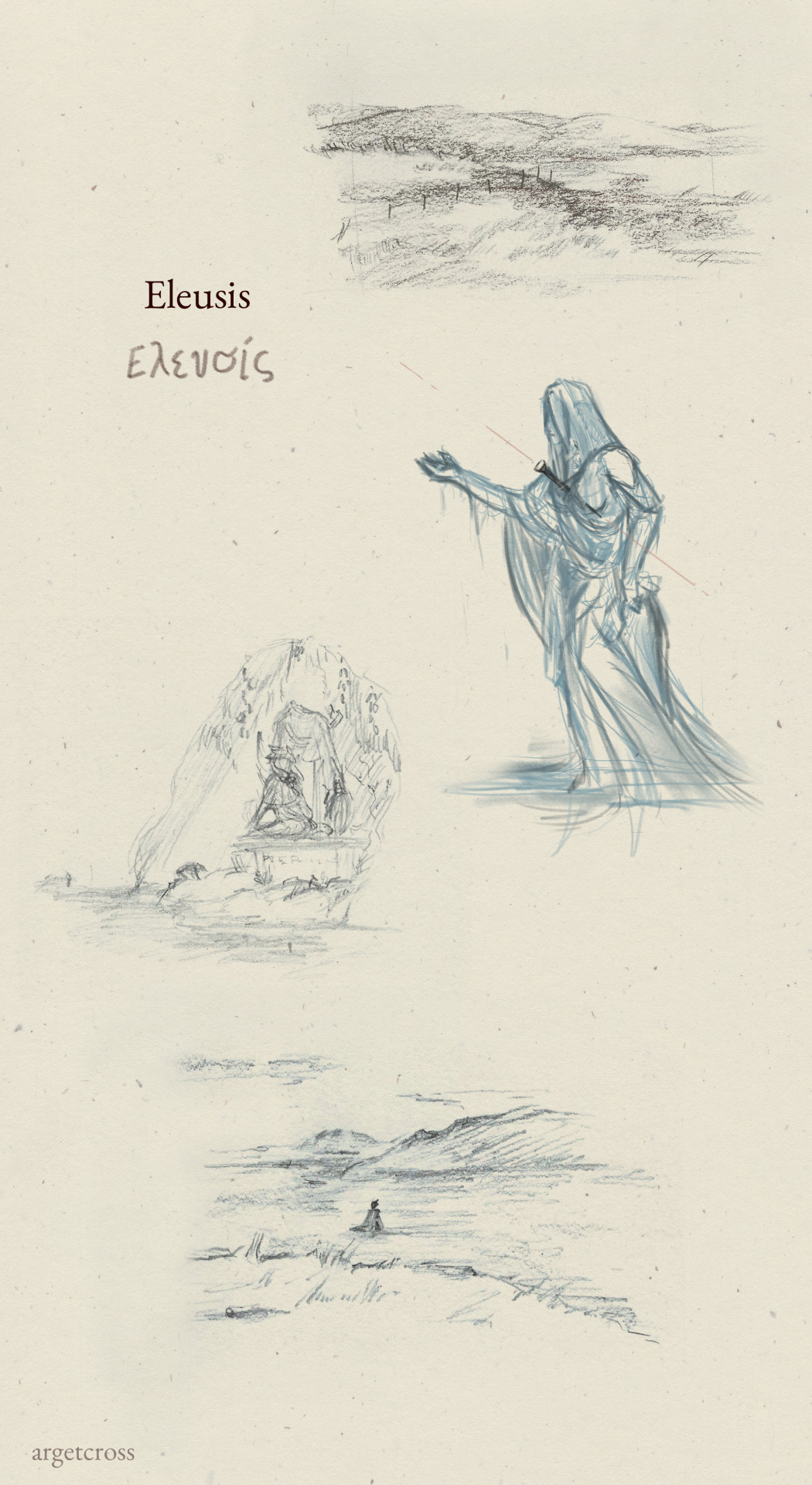

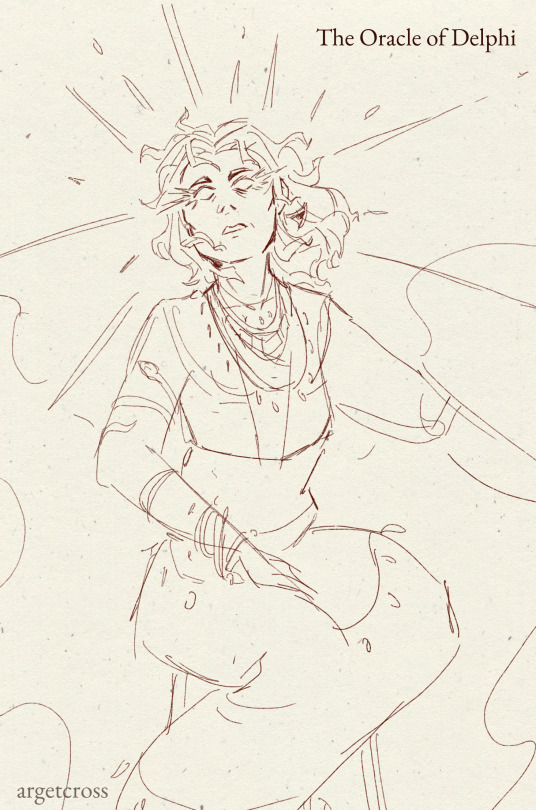
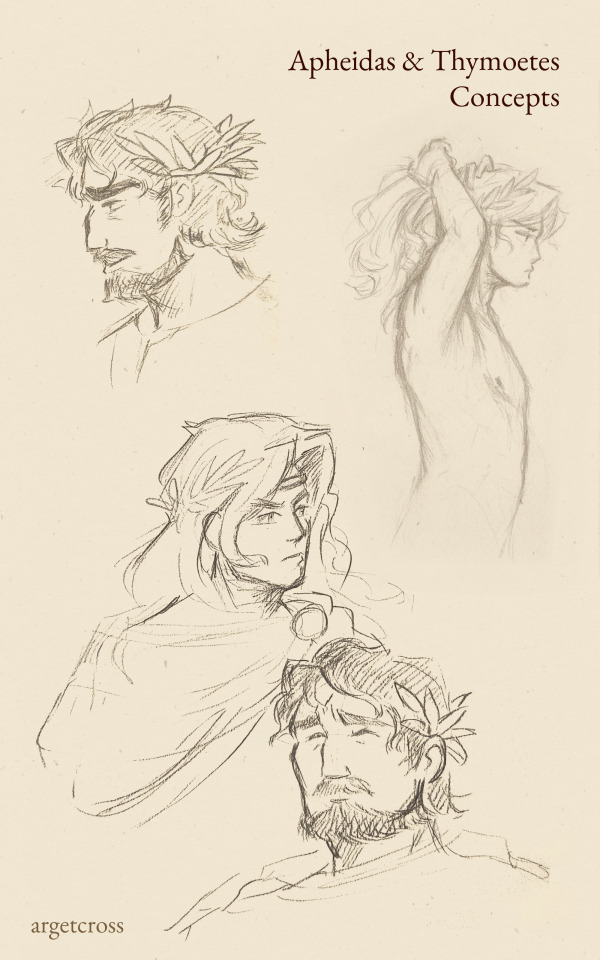
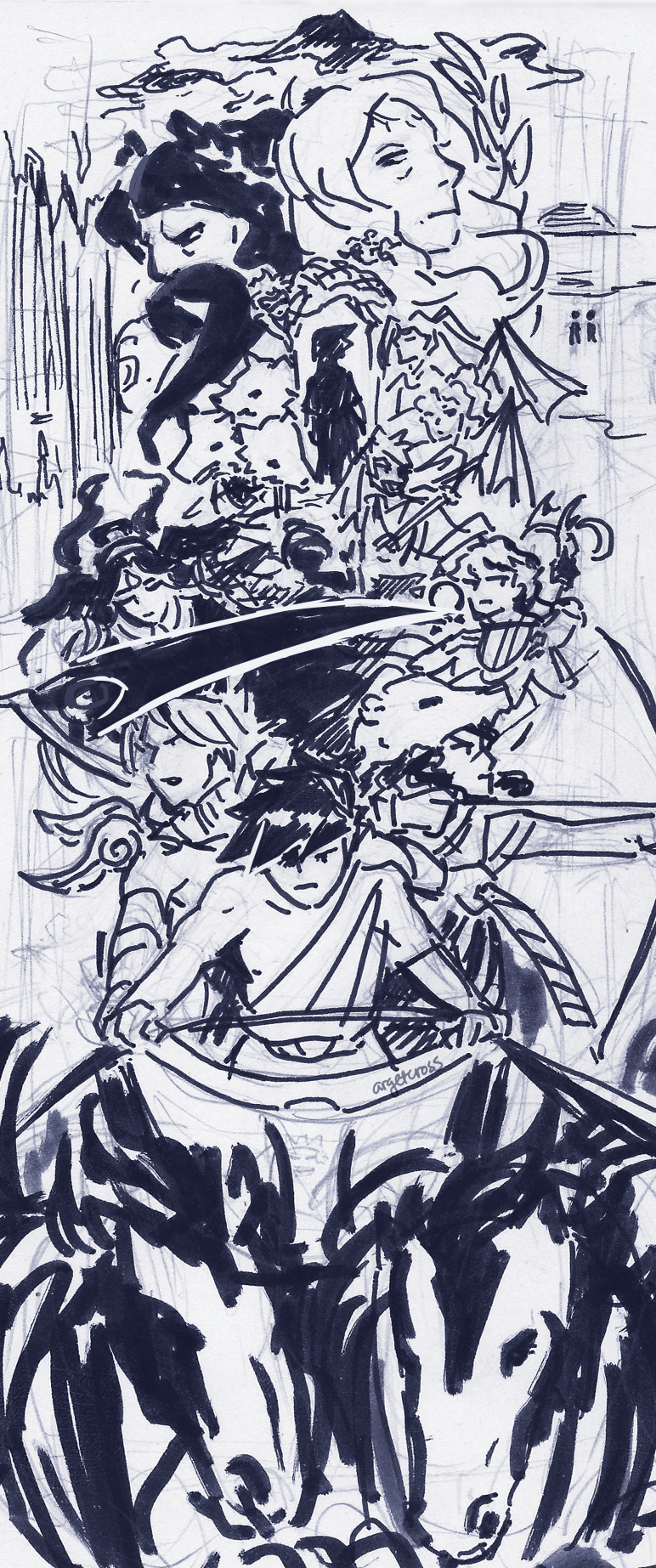
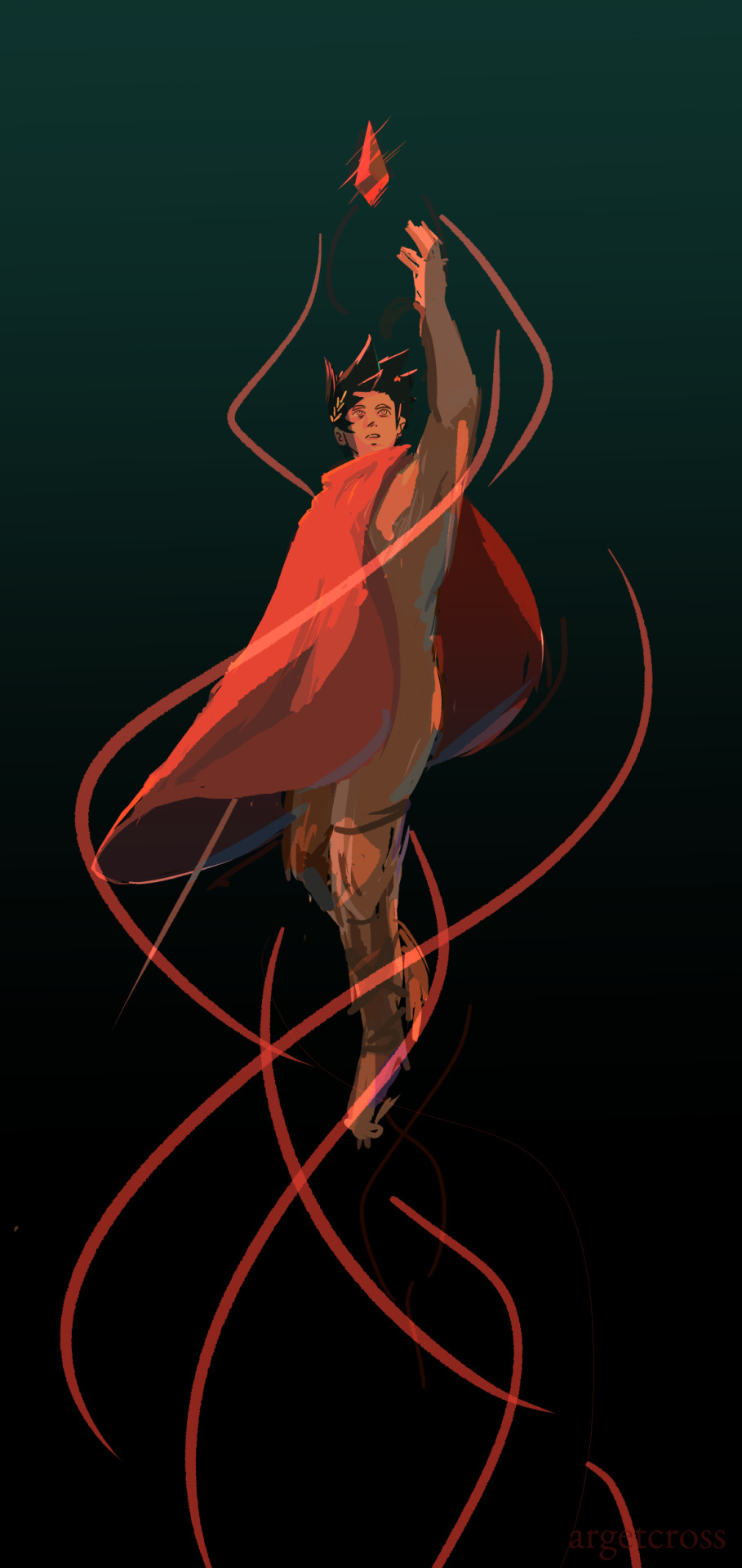

Happy 4th anniversary to wasting beats of this heart of mine, my Zagreus becomes mortal AU! Another year, some more adventures undertaken.
This year, I've unearthed more concepts and half-finished paintings all the way from 2021. I've included notes under the cut about each piece, as well as more reflections.
If you told me in October 2020 that you'll write a fic over 100k words long, spanning multiple cities, with multiple POVs, I would have said, "Are you sure?". I think I never really imagined I could keep a story running, much less one that demands so much of its author. At the same time, this work has been my deepest and most fulfilling pleasure. It lives in my dreams, haunts my waking moments, and demands I regularly carve my heart out and poke through the viscera. I suppose such is the nature of art.
We've been approaching the end of Part III, and readers up-to-date know I've mentioned planning for five parts in total. Five acts, five biomes: it only feels fitting. Many things I had looked forward to (the chariot race! Kyane and Persephone! The return of Thymoetes!) have come to life on the page, but there's still so much of the yarn left to spin. I never expected needing years to complete this story, but I also feel strongly I am beholden to it now. To Zagreus, to Demeter's children, to the mortals and gods, above and below. I will continue to try my best.
Thank you to jules, val, nan, robin, and spleen for having beta'd for me during these years. This story wouldn't be what it is without you. Thank you to mag, for having crawled through the trenches of creating an enormous fanwork and countless hours of spreadsheeting, with me. To every artist that has ever drawn me anything, it is truly humbling to be able to inspire your work. To the House Party, whose friendship I am grateful for every day.
And to anyone who has ever read part of the story, left a comment, and stepped along on this journey with me, I cannot overstate how grateful I am. I remain baffled and pleasantly surprised that this world of mine can touch your heart. It's a story that I hope, when it completes, you will pick up again from time to time, and take pleasure in its telling once more.
With all my love,
Arget
--
Notes about each image:
Thanatos and Zagreus by the sacred olive trees of Athena. This painting was based on a photo I took in Athens. The quality of the sunlight astounded me and, in turn, made me think about life and death.
Thanatos anointing the body of the god Zagreus with nectar. This is related to the scene in Chapter 23, when he and Nyx converse by Zagreus' bedside.
Eleusis concepts. For such a powerhouse of a cult, Eleusis itself has a provincial feeling to it. I was captivated by the idea of the sea, and the fact that Zagreus had never spent any time on the coast. This would have been his first experience with it.
Athens. What can I say about Athens that hasn't been said? The trip I took late 2022 provided a lot of the inspiration for the citadel aspect of the acropolis. This is not the Athens of Classical Greece, the polis of democracy, but a fictionalized city-kingdom, under the rule of its royal family. The idea that Callisto had a student living in Athens was both a nod to the extensive trade happening during the Bronze Age and a deconstruction of the Amazon myth that the Greeks told themselves.
Clymene, the Oracle of Delphi. This was originally meant to be a Hades game-like portrait, but I scrapped the idea. She is dressed in the fashion closer to the Minoans, to give her a more Bronze Age feeling. As the head priestess, I wanted to show her age.
Apheidas and Thymoetes sketches. The two brothers are supposed to look night and day from each other. I tried to give Apheidas a pleasant sort of face, in comparison to Thymoetes' haughtiness.
The tapestry sketch. This was one of the first drawings I ever made about wasting beats, in an attempt to understand the type of story I was about to write. Key elements had already been decided, such as the chariot race and the way Demeter and Hades would play the role of the absent gods, for above as well as below. I had not written Apollo at this time, so you see him here with short hair.
Zagreus, reaching for a bloodstone. The chlamys, a gift from his foster-father's wife, has been the simple denotation of mortal Zagreus. Something bright and red, simple for it was woven by a farmer's wife, and barely able to protect his weaker mortal body.
Megaera, hurt and angry, and Than, stricken and alarmed, amidst a storm of paper. This is a scene from Chapter 18, Primordial Winter, that I had always wanted to illustrate.
#hades game#zagreus#thanatos#thanzag#zagthan#wasting beats of this heart of mine#my fic#my art#callisto#megaera#zagreus becomes mortal au#happy anniversary my beloved fic
290 notes
·
View notes
Text
Dresses as Art: A Selection of Timeless Fortuny Gowns
Mariano Fortuny (1871-1949)

Silk Pleated Delphos Gown in Champagne with Murano Glass Beadwork • c. 1910
The Delphos gown is a finely pleated silk dress first created in about 1907 by French designer Henriette Negrin and her husband, Mariano Fortuny y Madrazo. They produced the gowns until about 1950. It was inspired by, and named after, a classical Greek statue, the Charioteer of Delphi. It is thought that to create the pleating House of Fortuny was famous for, the pleats were stitched down and once heat set, removing the stiches.

Right: Fortuny delphos gown in rapberry silk • c. 1930
Left: Two Peplos gowns • 1920s


Two Delphos gowns, one paired with a Fortuny jacket • 1910s
#fashion history#art to wear#mariano fortuny#henriette negrin#vintage designers#1910s fashion#1920s fashion#1930s fashion#fortuny evening gowns#designer fashion history#the resplendent outfit blog#fashion history blog
191 notes
·
View notes
Text
💿Some of life things in astrology💿
✨Venus in cancer - I usually see that these people always include parents in their daily life , in their love life , in their life in general. Also they always include their parents in their vlogs. They will always post their parents on social media or doing videos with them.
🎶People who have aquarius in 2nd house have the best taste in music. They have their own music that they listen to, but people always like it. They just put some song and people will love it.
🍸Mercury is how you express yourself and in which way and also shows how good you are in texting with people and how you are in contact with others.
🦭Mercury in capricorn- they are not such a good texter actually.I would say that they will texting you about: I don't know about time or place you two will meet or practical things. But they will not text you like 24/7 or something they are too busy. And also I feel like capricorn usually think they wasting their time texting someone things that don't usually have any meaning or are not practical.
🦋Mercury in scorpio- dig deep into things. Sometimes even too deep. In the sense that they go so deep into the things they want to find out ,that they hurt them at the end. One thing they have is, that they feel better when they find out things by themselves than when they find out from others. They are very deep thinkers and very deep in conversations they don't like small talks and they will always want to go deep with you in every conversation they will have. When you hurt them they will be harsh and very mean to you because when they speak they speak to their emotions.
❤️🔥Fire signs are confident, driven, lively and full of energy. They like to be mentally and physically active. They are also dreamers who measure their height. Fire signs are competitive.
🖤Earth signs are more in tune with nature and their bodies. They are reliable, tough, practical partners and friends. Earth signs take time to master a skill.
💕Air signs are mental and need a lot of communication. They like to remain objective. They often negotiate for justice. They value freedom and dislike conflict.
🩵Water signs are by nature creative, imaginative, dreamy and often very ignorant. Water is associated with emotions and the unconscious. They can be visionaries and have many ideas clairvoyant abilities. Water signs care about the environment and by nature feel with everyone and everything around them.
🌞God of Sun is Apollo. It is carved in the sanctuary of Apollo in Delphi the ancient saying "Know thyself". Because with the sun we ask ourselves "who am I?" and "why am I here?". Because with the sun we feel that our lives have meaning, that we were born with a mission that we must fulfill, and we want to know what it is supposed to be.
The sun represents its essence and indicates our goal in life. With the sun, we can discover qualities and find ways to use them in our lives. This can mean that we engage in a certain activity or wear colors with a connection to the sun. Just as Apollo rides in his fiery chariot across the sky, so the sun represents a heroic journey through life. Therefore, we can connect it to the work we do or should do performed in the world. The path of the sun is usually not very clear and, just like the heroic myths say, there are many pitfalls to overcome and lessons to be learned. It is these difficult tasks that test our limits, they confront us with loss and sacrifice and force us to become the best we can be. The Sun together with Saturn represent the father principle. The sign in which our sun is describes experiences with the father figure. In childhood, our first hero is the father.
🫧Nobody talks about how lonely you can feel with Uranus in the first house. Because it's the part of your personality and Uranus could make you feel that you don't belong somewhere or you feel some kind of distance in this house. When it's in in your first house you could feel that being around people make you lonely or doing some things alone for ex.: eating alone in the restaurant this could be the problem for you because you could feel very lonely when you do some things in the public alone or I don't know going to the coffee alone.
🌟Planets return show you things that you are not aware of it or you're not expressing them. For example Mercury return can show you the whole new perspective about things and could change your mindset for the better. Venus return can show you the new value about you or what you value about others. You are more aware now what u actually want. Where do you find real love. Mars return it can show you a new way to be brave, fearless and go outside your comfort zone. And where is your energy best expressed and through what. You can show your anger more during this time.
🍿It’s really hard to forget people with whom you share 4th House this is because they make you feel the most familiar and the most comfortable around them. It's like the family kind of vibe.It feels like coming home and being with them it's like being in the safe and secure environment. 4th house represents our home , the people that are closed to us , the space when you feel the most comfortable and people with whom you feel the most comfortable with.
🧜🏼♀️ Venis trine Uranus- I find this aspect so unique because you actually fall in love with the person's uniqueness and differentness they have. You actually love them for it. You love that this person is different and is not the same that anyone else. For ex.: it could be you don't like face tattoos or you don't like someone who dress extra but when you meet this person you actually love this on them. This relationship can be unique and so different than the others.
🧚🏼♀️Uranus in 1st house in synastry- it's kind of the same vibe that with uranus conj venus but it's not because when you first meet this person you feel like this person is different than the others and that they have some unique energy that nobody else has. You feel like this person is special and so unique. That their personality could be so different than the others. It's like you can try to find someone else but you feel like nobody else could compare to this person.
🌙Personal planets appear faster in synastry and the first time you meet the person (especially: sun, moon, mercury). And, of course, rising sign :which indicates the energy of a person when you meet them. But here's the trick with rising sign that many times the true energy of a person can be hidden and only show up after a while when you get to know the person better. 💧The outer planets, however, manifest themselves over the years, when the persons already know each other very well and have a relationship.
🧸3rd house not only represents communication, mind,car ,electronics ,social media ,telephones and any of this stuff. It's also represents your early high school experience and also people who were with you in your high school. Your high school first love and how it feels like. Your high school best friend. So every person you have a 3rd house synastry with is usually a person you met at that time. A lot of people you share third house with or the sign you have in the third house is meant to be for you to meet them actually.
🎸The best time you will have with the person and the best things you will experience with the people are people u share 9th house. This house is ruled by Jupiter the luckiest Planet. This is the house of gifts. The girt from God, so when you meet the people you share this house with it's a gift that actually was brought into your life. All the things you will experience with these people will actually mean something to you. Because 9th house is meaningful house is where you find meaning, where u seek for meaning , when u actually find optimism. The person's u share this house with can actually inspire you the most or give you the most luckiest advice.
🧁I believe that it's not only 5th house that represents memories, but every house represents some memory you have from your early childhood. Every house is something special. The sign that you have in this house is the sign that reminds you most of this event of your life. So for ex.: aries in 3rd house -maybe this person were your best friend and remind you the most of your high school experience. Taurus in 4th house- this person maybe remind you the most of your home or your childhood, family life. Maybe you grew up with this person. Leo in 8th house-this person probably reminds you most of a dark/deep period of your life. Maybe you could spend the most intense times with this person and share the most secrets.
🎸For personal readings u can sign up here: https://snipfeed.co/bekylibra 🎸
-Rebekah💿🧚🏼♀️☁️
653 notes
·
View notes
Text

François Chamoux, Charioteer of Delphi (from 'The Civilization of Greece')
33 notes
·
View notes
Text
"It was a Delphic answer, he thought, to an impossible petition; you could see the smile behind the smoke"
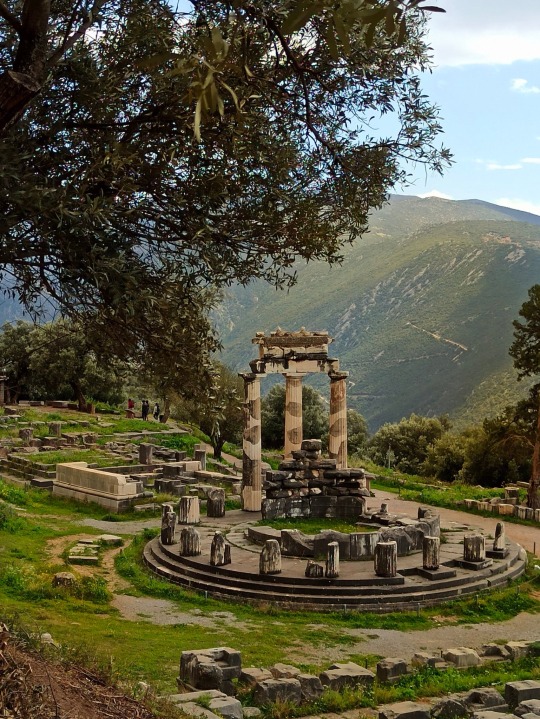
The Tholos of Delphi, Greece
3K notes
·
View notes
Photo

Ancient Greek Sculpture
The sculpture of ancient Greece from 800 to 300 BCE took inspiration from Egyptian and Near Eastern monumental art, and evolved into a uniquely Greek vision of the art form. Greek artists captured the human form in a way never before seen where sculptors were particularly concerned with proportion, poise, and the idealised perfection of the human body.
Greek sculptural figures in stone and bronze have become some of the most recognisable pieces of art ever produced by any civilization and the Greek artistic vision of the human form was much copied in antiquity and has been ever since.
Influences & Evolution of Greek Art
From the 8th century BCE, Archaic Greece saw a rise in the production of small solid figures in clay, ivory, and bronze. No doubt, wood too was a commonly used medium but its susceptibility to erosion has meant few examples have survived. Bronze figures, human heads and, in particular, griffins were used as attachments to bronze vessels such as cauldrons. In style, the human figures resemble those in contemporary Geometric pottery designs, having elongated limbs and a triangular torso. Animal figures were also produced in large numbers, especially the horse, and many have been found across Greece at sanctuary sites such as Olympia and Delphi, indicating their common function as votive offerings.
The oldest Greek stone sculptures (of limestone) date from the mid-7th century BCE and were found at Thera. In this period, bronze free-standing figures with their own base became more common, and more ambitious subjects were attempted such as warriors, charioteers, and musicians. Marble sculpture appears from the early 6th century BCE and the first monumental, life-size statues began to be produced. These had a commemorative function, either offered at sanctuaries in symbolic service to the gods or used as grave markers.
The earliest large stone figures (kouroi - nude male youths and kore - clothed female figures) were rigid as in Egyptian monumental statues with the arms held straight at the sides, the feet are almost together and the eyes stare blankly ahead without any particular facial expression. These rather static figures slowly evolved though and with ever greater details added to hair and muscles, the figures began to come to life.
Slowly, arms become slightly bent giving them muscular tension and one leg (usually the right) is placed slightly more forward, giving a sense of dynamic movement to the statue. Excellent examples of this style of figure are the kouroi of Argos, dedicated at Delphi (c. 580 BCE). Around 480 BCE, the last kouroi become ever more life-like, the weight is carried on the left leg, the right hip is lower, the buttocks and shoulders more relaxed, the head is not quite so rigid, and there is a hint of a smile. Female kore followed a similar evolution, particularly in the sculpting of their clothes which were rendered in an ever-more realistic and complex way. A more natural proportion of the figure was also established where the head became 1:7 with the body, irrespective of the actual size of the statue. By 500 BCE Greek sculptors were finally breaking away from the rigid rules of Archaic conceptual art and beginning to reproduce what they actually observed in real life.
In the Classical period, Greek sculptors would break off the shackles of convention and achieve what no-one else had ever before attempted. They created life-size and life-like sculpture which glorified the human and especially nude male form. Even more was achieved than this though. Marble turned out to be a wonderful medium for rendering what all sculptors strive for: that is to make the piece seem carved from the inside rather than chiselled from the outside. Figures become sensuous and appear frozen in action; it seems that only a second ago they were actually alive. Faces are given more expression and whole figures strike a particular mood. Clothes too become more subtle in their rendering and cling to the contours of the body in what has been described as 'wind-blown' or the 'wet-look'. Quite simply, the sculptures no longer seemed to be sculptures but were figures instilled with life and verve.
Continue reading...
67 notes
·
View notes
Text
Hymn to Lord Apollon
O blessed one, slayer of the Python
He who utters words true yet cruel,
golden-haired god with eyes of a wolf
hands of stars that drive the chariot.
I praise the lord of Delphi, who owns my life
Glorious archerer with a bow of silver
arrows made of gold and you shoot afar
you heal and plague your mortals with your aim
You and fierce Artemis, goddess of the hunt
Who slew Niobe's children, seven boys and seven girls
Who helped Paris to slay the beastly Achilles, the Greatest of Achaeans
Who slew Tityos to protect Lovely Leto.
I praise you even if your swan-led chariot
flies over Sindh, the province of great fish,
Or China, a country of industries,
Or Turkey, a country of beauty
for it is you and Great Helios who light up the world,
It is you who brings whispers of the heart,
and strikes inspiration with your lyre.
Father Phoebus! Listener of the raven's call
he who saved me from the dark clutches,
and took me under his wing,
I praise you and offer libations in your name,
hear my prayer, as I sing your praises.
Blessed be!
#hellenic polytheism#hellenic pagan#helpol#hellenic deities#hellenic worship#lord apollon#hellenic paganism#apollo#paganblr#paganism#yes this was inspired by the orphic hymns fight me
30 notes
·
View notes
